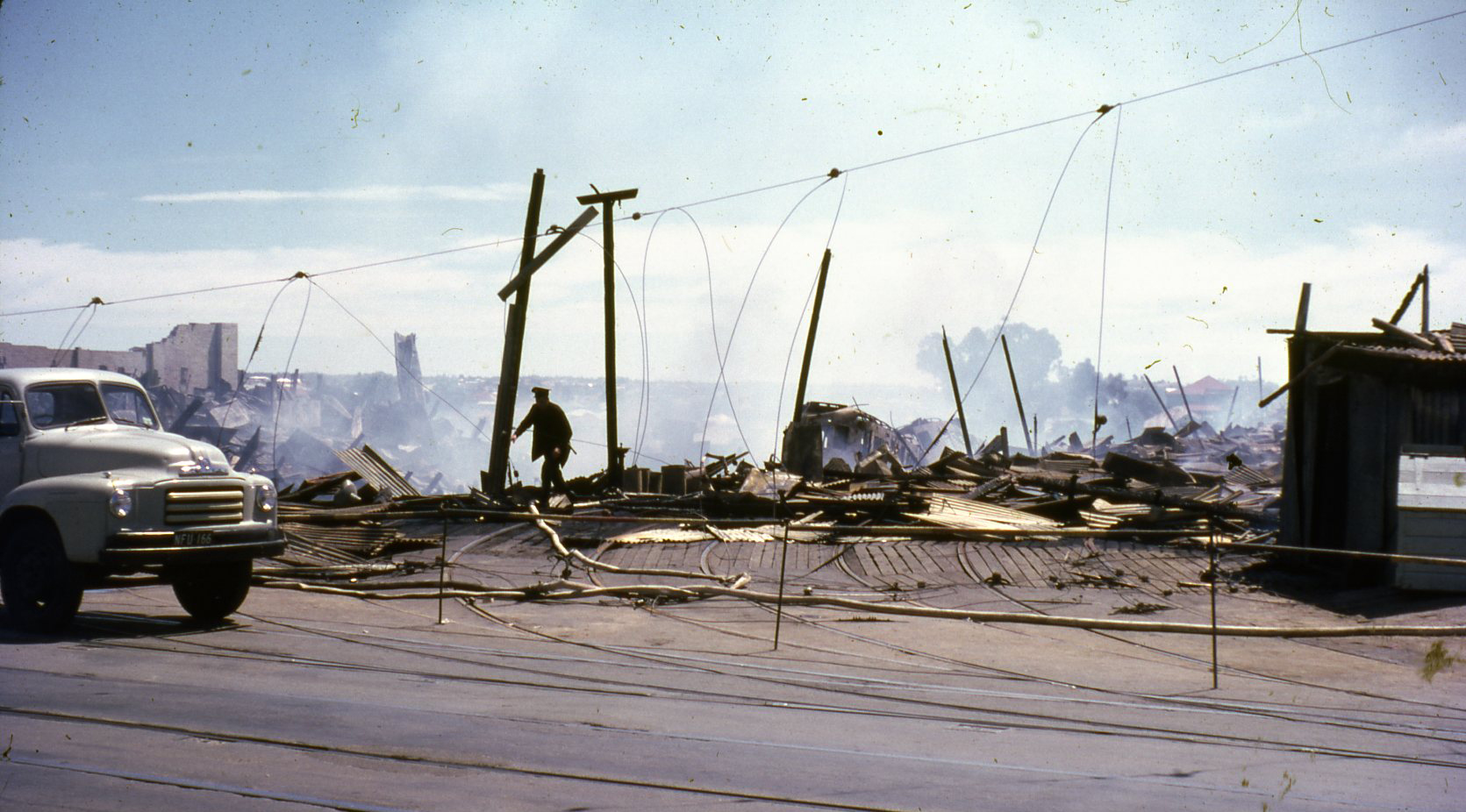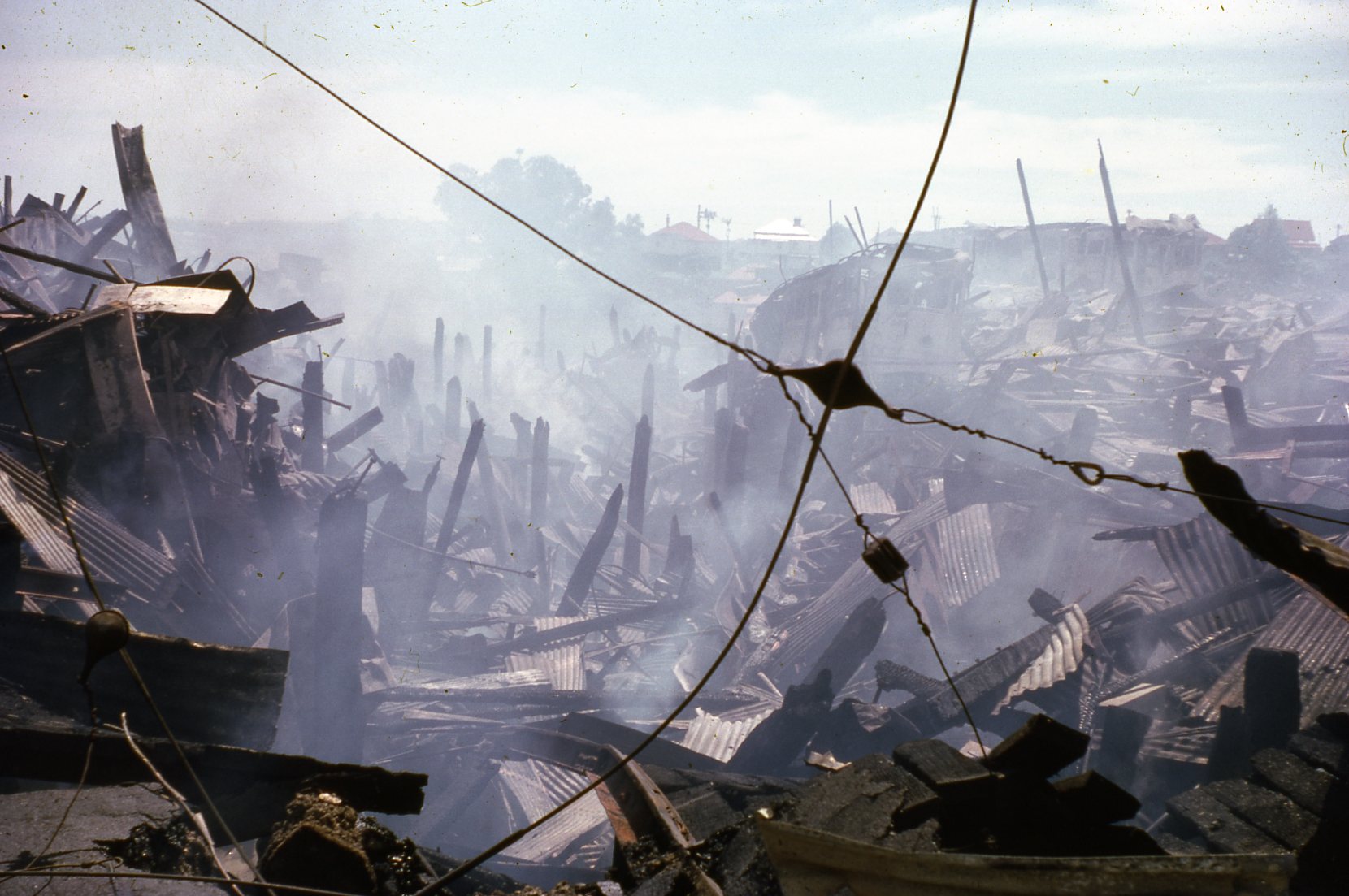Towering green flames marked the worst blaze Brisbane had seen and accelerated discussions about the future of the city’s tram network.

Built in 1915 on the side of a hill on Latrobe Terrace, where Paddington Central stands today, the Paddington tram depot was a landmark in the district. Trams entered the depot from Latrobe Terrace on the high side of the hill. Supporting the depot on the low side was an impressive mass of timber poles, some as tall as 30 feet high.


“The only men in the depot – two depot masters and a despatcher – were able to drive only three trams clear and rescue four cash boxes before power failures and fierce heat drove them from the depot. Five fire engines and four powerful pumps were used to fight the blaze but lack of water pressure hampered firemen at first.”
The Canberra Times, 29 September 1962



As fate would have it, Brisbane’s oldest remaining tram was saved from the Paddington depot blaze. Built in 1885, this horse-drawn tram would normally have been kept at Paddington but was moved to another depot a few days before the fire to be prepared for an appearance in a parade.
On 4 October 1962, The Canberra Times reported that, “The worst fire in Brisbane’s history has enlivened a long-standing controversy – should the city continue to buck world transport trends or should it scrap its trams?” The end of petrol rationing in 1950 and the growing affordability of locally built cars meant more people were getting behind the wheel and public transport usage began a steady decline. By the 1960s, the overwhelming presence of cars on the road was curtailing the efficiency of trams and trolley buses.

The year after the devastating fire the Rainworth, Toowong, Bulimba Ferry and Kalinga tram lines were officially closed. Then in 1964 the State Government commissioned a comprehensive survey of Brisbane’s future traffic requirements. Proposed road widening and the addition of traffic islands did not bode well for Brisbane’s trams. That same year, the first of Brisbane’s Phoenix trams took flight – eight trams built by specialists from spare parts salvaged from the Paddington depot and embellished with an insignia of a mythical bird rising from the ashes.

Despite this poetic return, trams were seen to be a hinderance to change. With their criss-crossed tracks fixed in concrete and overhead scramble of wires, they posed great challenges to expansion of the city’s roadways and public transport system. It was decided that diesel buses were the best solution for the growing populace and gradually Brisbane’s trams were replaced.
With a police escort in tow, Brisbane’s last tram passed along Queen Street on the night of Sunday 13 April 1969. It is reported that on that day 72,000 people travelled on trams, bringing with them a mixed bag of feelings about the closure.
From Paddington to Norman Park, reminders of Brisbane’s tram network are peppered all over the city, including a series of now heritage listed former tram shelters. Visit Making Place: 100 Views of Brisbane at Museum of Brisbane and spot some artist’s impressions of our city’s long lost public transport.








